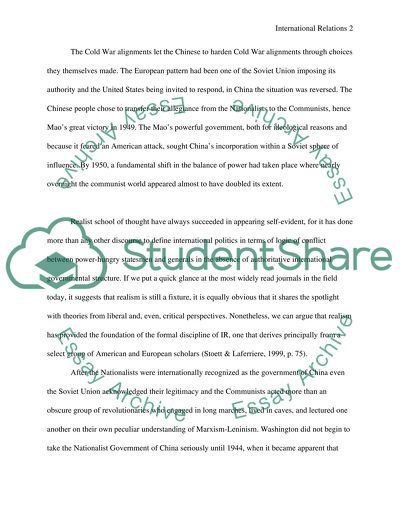Cite this document
(The Rise of China During the Cold War Essay Example | Topics and Well Written Essays - 2000 words, n.d.)
The Rise of China During the Cold War Essay Example | Topics and Well Written Essays - 2000 words. https://studentshare.org/politics/1547029-discussion-interpretation-of-an-international-issue-or-event-during-the-cold-war
The Rise of China During the Cold War Essay Example | Topics and Well Written Essays - 2000 words. https://studentshare.org/politics/1547029-discussion-interpretation-of-an-international-issue-or-event-during-the-cold-war
(The Rise of China During the Cold War Essay Example | Topics and Well Written Essays - 2000 Words)
The Rise of China During the Cold War Essay Example | Topics and Well Written Essays - 2000 Words. https://studentshare.org/politics/1547029-discussion-interpretation-of-an-international-issue-or-event-during-the-cold-war.
The Rise of China During the Cold War Essay Example | Topics and Well Written Essays - 2000 Words. https://studentshare.org/politics/1547029-discussion-interpretation-of-an-international-issue-or-event-during-the-cold-war.
“The Rise of China During the Cold War Essay Example | Topics and Well Written Essays - 2000 Words”. https://studentshare.org/politics/1547029-discussion-interpretation-of-an-international-issue-or-event-during-the-cold-war.


